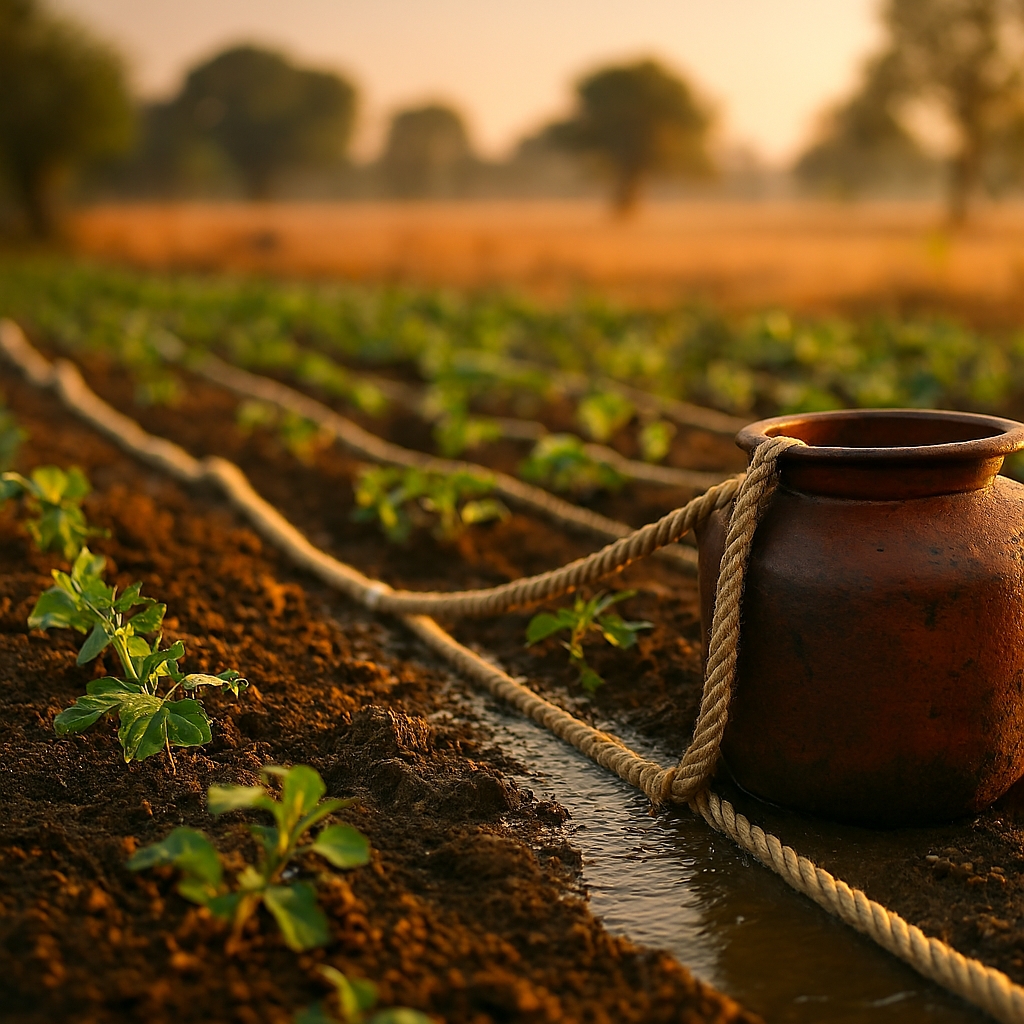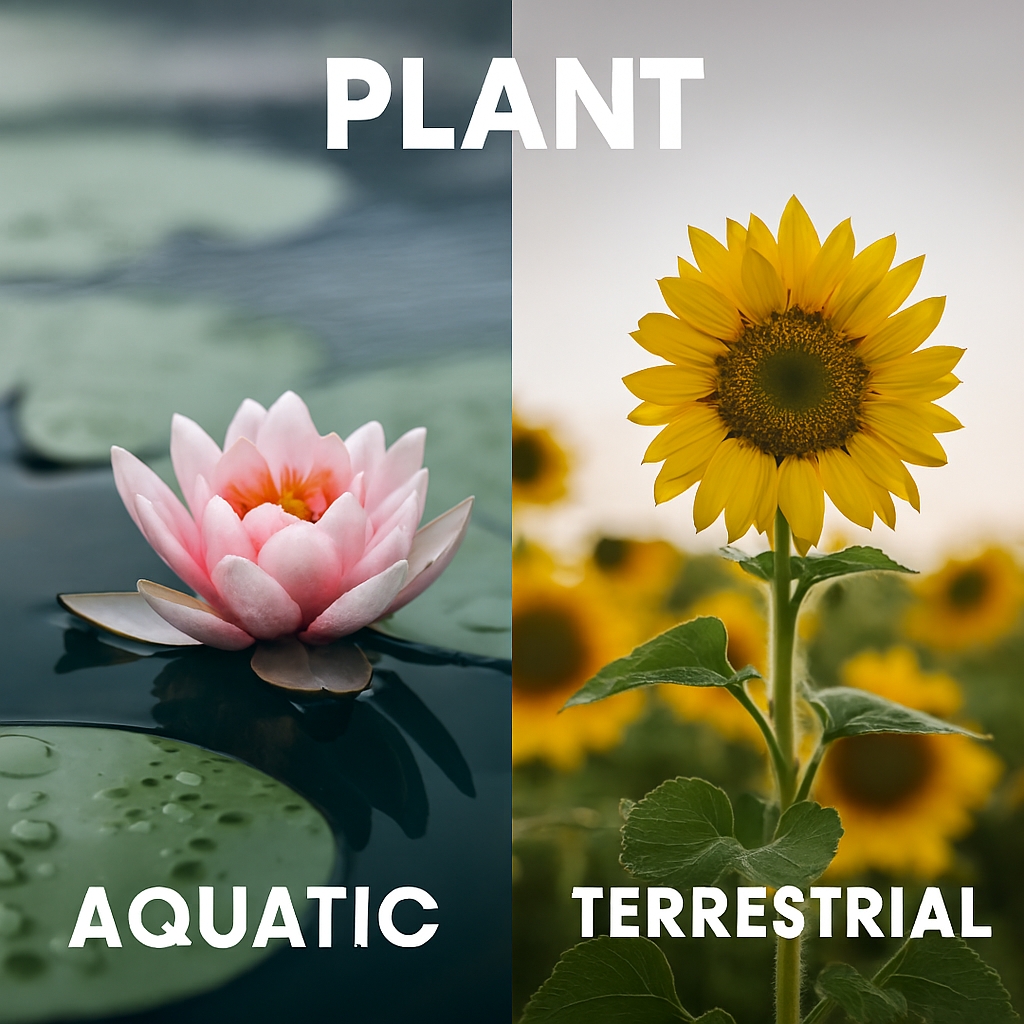Future Of Fishing Hooks – Why Fishing Hooks Matter
Fishing hooks are among the most overlooked tools in environmental debates, yet they play a critical role in aquatic ecosystems. Millions of hooks are lost in rivers, lakes, and oceans every year, and many of them remain intact for decades. This persistence creates hazards for fish, birds, and marine mammals that can ingest or become entangled in them. The question of whether hooks should be designed to break down over time is not just technical but ethical.
Aluminum and stainless steel hooks, while durable, pose long-term risks because they do not degrade naturally. The environmental impact of these materials is significant, and banning them could be a step toward safer waters. Biodegradable alternatives are emerging, but they require careful evaluation to balance strength with sustainability. The debate is not about convenience but about responsibility to ecosystems. Anglers, manufacturers, and regulators all have roles to play in shaping the future of fishing hooks and gear.

Environmental Impact Of Non-Degradable Hooks
Fishing hooks made of aluminum and stainless steel remain in aquatic environments for decades. Their durability means they continue to pose risks long after being lost. Fish can swallow these hooks, leading to internal injuries or death. Birds often ingest them while scavenging, causing blockages or poisoning. Marine mammals may suffer entanglement, restricting movement and feeding. The persistence of these metals also contributes to pollution in sediments. Unlike organic materials, they do not break down naturally. This creates cumulative hazards as more hooks are lost each year. The environmental footprint of these metals is therefore long-lasting.
| Material Type | Durability In Water | Environmental Risk | Breakdown Time |
|---|---|---|---|
| Aluminum | High | Severe | Indefinite |
| Stainless Steel | Very High | Severe | Indefinite |
| Biodegradable Polymers | Moderate | Low | 1-5 Years |
| Carbon Steel | Moderate | Medium | 5-10 Years |
Safety Concerns For Fish And Wildlife
Hooks that do not degrade can remain lodged in fish for their entire lifespan. This causes chronic pain, infection, and reduced ability to feed. Birds that ingest hooks often die from internal injuries. Marine mammals may suffer restricted movement if hooks attach to nets or ropes. The safety of wildlife is compromised by the persistence of these materials. Biodegradable hooks, by contrast, dissolve over time, reducing long-term harm. Anglers often underestimate the cumulative effect of lost hooks. Each hook may seem insignificant, but millions accumulate annually. Wildlife safety is therefore directly tied to hook design.
- Fish suffer internal injuries from swallowed hooks
- Birds ingest hooks while scavenging, leading to death
- Marine mammals face entanglement risks
- Non-degradable hooks persist for decades
- Biodegradable hooks reduce long-term harm
- Anglers underestimate cumulative losses
- Wildlife safety depends on hook design
- Chronic pain and infection reduce fish survival
- Hook ingestion blocks digestive systems in birds
- Ecosystem health declines with persistent hazards
The Case Against Aluminum Hooks
Aluminum hooks are lightweight and resistant to corrosion, making them popular among anglers. However, their durability is precisely what makes them environmentally harmful. Once lost, they remain intact indefinitely, posing risks to fish and birds. Aluminum does not biodegrade in aquatic environments. Its persistence contributes to pollution in sediments and water columns. The case against aluminum hooks is therefore based on their inability to break down. Alternatives exist that balance strength with biodegradability. Banning aluminum hooks would reduce long-term hazards.
| Hook Type | Strength | Corrosion Resistance | Environmental Impact |
|---|---|---|---|
| Aluminum | High | High | Severe |
| Stainless Steel | Very High | Very High | Severe |
| Biodegradable Composite | Moderate | Moderate | Low |
| Carbon Steel | Moderate | Moderate | Medium |
The Case Against Stainless Steel Hooks
Stainless steel hooks are prized for their strength and longevity. They resist rust and maintain sharpness for years. However, these qualities make them dangerous when lost in aquatic environments. Stainless steel does not degrade naturally, persisting indefinitely. Fish and birds that ingest these hooks suffer long-term harm. The environmental footprint of stainless steel is severe. Alternatives that degrade over time offer safer solutions. The case against stainless steel is therefore clear. Banning them would reduce persistent hazards in ecosystems.
- Stainless steel resists rust and corrosion
- Hooks remain sharp for years
- Lost hooks persist indefinitely
- Wildlife ingestion causes long-term harm
- Environmental footprint is severe
- Alternatives degrade naturally
- Safer solutions exist in biodegradable materials
- Banning stainless steel reduces hazards
- Ecosystem health improves with degradable hooks
- Strength does not justify environmental risk
Biodegradable Alternatives
Biodegradable hooks are designed to dissolve over time in aquatic environments. They balance strength with sustainability. These hooks reduce long-term harm to fish and wildlife. Materials such as polymers and composites are used. Breakdown times vary from one to five years. Anglers can still rely on them for effective fishing. The environmental footprint is significantly lower. Biodegradable alternatives represent a responsible choice. Their adoption requires education and regulation. They offer a path toward safer ecosystems.
| Material | Breakdown Time | Strength | Environmental Risk |
|---|---|---|---|
| Polymers | 1-3 Years | Moderate | Low |
| Composites | 2-5 Years | Moderate | Low |
| Carbon Steel | 5-10 Years | Moderate | Medium |
| Stainless Steel | Indefinite | Very High | Severe |
Regulatory Perspectives
Governments and environmental agencies are beginning to consider regulations on fishing gear. The persistence of aluminum and stainless steel hooks is a growing concern. Regulations could mandate biodegradable alternatives. Such policies would reduce long-term hazards in aquatic ecosystems. Enforcement would require cooperation with manufacturers and anglers. Education campaigns could support adoption. Regulatory perspectives emphasize responsibility to ecosystems. Banning harmful materials aligns with conservation goals. Regulations would balance fishing practices with sustainability. The future of fishing gear depends on proactive policies.
- Governments consider regulations on fishing gear
- Aluminum and stainless steel pose growing concerns
- Biodegradable alternatives could be mandated
- Policies reduce long-term hazards
- Cooperation with manufacturers is essential
- Angler education supports adoption
- Responsibility to ecosystems is emphasized
- Banning harmful materials aligns with conservation
- Regulations balance fishing with sustainability
- Proactive policies shape the future of fishing gear

Angler Responsibility And Lost Gear
Anglers play a direct role in the environmental impact of fishing hooks. Every lost hook contributes to long-term hazards in aquatic ecosystems. Many anglers underestimate the cumulative effect of gear loss. Responsible practices include retrieving gear whenever possible. Education campaigns can raise awareness about environmental consequences. Biodegradable hooks reduce risks but require widespread adoption. Anglers must balance tradition with sustainability. The responsibility lies not only with manufacturers but also with individuals. Lost gear is not just waste but a hazard. Angler responsibility is therefore central to the debate.
| Responsibility Area | Current Practice | Needed Change | Environmental Benefit |
|---|---|---|---|
| Gear Retrieval | Often Neglected | Prioritized | Reduced Hazards |
| Hook Choice | Durable Metals | Biodegradable | Safer Ecosystems |
| Awareness | Limited | Expanded | Informed Anglers |
| Regulation Support | Mixed | Cooperative | Stronger Policies |
Ecosystem Health And Hook Design
The health of aquatic ecosystems depends on responsible hook design. Non-degradable hooks persist indefinitely, harming fish and wildlife. Biodegradable alternatives dissolve over time, reducing long-term risks. Ecosystem health is directly tied to the materials used. Pollution from metals accumulates in sediments and water columns. Fish populations decline when hooks cause chronic injuries. Birds and mammals suffer from ingestion and entanglement. Ecosystem balance requires safer fishing gear. Hook design is therefore a matter of conservation. Sustainable choices protect biodiversity.
- Ecosystem health depends on hook design
- Non-degradable hooks persist indefinitely
- Biodegradable alternatives dissolve naturally
- Pollution accumulates in sediments
- Fish populations decline from injuries
- Birds suffer ingestion risks
- Mammals face entanglement hazards
- Ecosystem balance requires safer gear
- Conservation depends on sustainable choices
- Biodiversity is protected by responsible design
Economic Considerations Of Hook Materials
The fishing industry must weigh economic factors when considering hook materials. Aluminum and stainless steel are cheap to produce but costly to ecosystems. Biodegradable alternatives may be more expensive initially. However, long-term environmental savings outweigh short-term costs. Regulations could shift market demand toward sustainable products. Manufacturers may face challenges in adapting production. Anglers may resist higher prices but benefit from safer ecosystems. Economic considerations must include external costs of pollution. Sustainable materials create new market opportunities. The economy and environment are interconnected in this debate.
| Material | Production Cost | Market Price | Environmental Cost | Long-Term Benefit |
|---|---|---|---|---|
| Aluminum | Low | Affordable | Severe | None |
| Stainless Steel | Low | Affordable | Severe | None |
| Biodegradable Polymers | Moderate | Higher | Low | Significant |
| Carbon Steel | Moderate | Moderate | Medium | Partial |
Innovation In Fishing Gear
Innovation in fishing gear is essential for sustainability. New materials are being developed to balance strength and biodegradability. Research focuses on polymers and composites that dissolve safely. Innovation requires collaboration between scientists and manufacturers. Anglers must be willing to adopt new technologies. Traditional materials like aluminum and stainless steel hinder progress. Innovation can reduce long-term hazards in ecosystems. Safer gear supports conservation goals. The fishing industry must embrace change. Innovation is the path to sustainable angling.
- Innovation balances strength and biodegradability
- Research focuses on polymers and composites
- Collaboration between scientists and manufacturers is needed
- Anglers must adopt new technologies
- Traditional materials hinder progress
- Innovation reduces hazards in ecosystems
- Safer gear supports conservation goals
- Industry must embrace change
- Sustainable angling depends on innovation
- Future fishing gear requires new ideas
Cultural Traditions And Modern Responsibility
Fishing is deeply rooted in cultural traditions worldwide. Many anglers value durability and reliability in gear. However, modern responsibility requires balancing tradition with sustainability. Non-degradable hooks conflict with conservation values. Cultural practices must evolve to protect ecosystems. Education can bridge tradition and responsibility. Anglers can honor heritage while adopting safer gear. Modern responsibility does not erase tradition but enhances it. Sustainable practices ensure fishing remains viable for future generations. Tradition and responsibility must coexist in angling culture.
| Cultural Value | Traditional Practice | Modern Responsibility | Outcome |
|---|---|---|---|
| Durability | Metal Hooks | Biodegradable Hooks | Safer Ecosystems |
| Reliability | Long-Lasting Gear | Sustainable Materials | Balanced Practices |
| Heritage | Conventional Methods | Adapted Techniques | Preserved Culture |
| Conservation | Often Overlooked | Central Priority | Protected Wildlife |
Scientific Evidence On Hook Persistence
Scientific studies confirm that aluminum and stainless steel hooks persist indefinitely. Research shows they remain intact in sediments for decades. Fish and birds ingest these hooks, leading to injuries and death. Marine mammals suffer entanglement from lost gear. Biodegradable alternatives dissolve naturally, reducing long-term harm. Evidence supports banning non-degradable materials. Scientific data highlights cumulative hazards of lost hooks. Ecosystem health declines with persistent pollution. Research provides a foundation for regulation. Science supports sustainable fishing practices.
- Studies confirm hook persistence
- Aluminum and stainless steel remain intact
- Fish ingest hooks, causing injuries
- Birds suffer from ingestion risks
- Mammals face entanglement hazards
- Biodegradable alternatives dissolve naturally
- Evidence supports banning harmful materials
- Cumulative hazards are documented
- Ecosystem health declines with pollution
- Science supports sustainable practices
Public Awareness And Education
Public awareness is crucial for adopting sustainable fishing gear. Many anglers are unaware of environmental consequences. Education campaigns can highlight risks of non-degradable hooks. Awareness encourages adoption of biodegradable alternatives. Schools and communities can promote conservation values. Media can amplify the importance of sustainable gear. Public awareness shifts cultural attitudes toward responsibility. Education empowers anglers to make informed choices. Awareness campaigns support regulatory efforts. Public knowledge is a cornerstone of sustainability.
| Awareness Tool | Current Reach | Potential Impact | Role In Sustainability |
|---|---|---|---|
| Education Campaigns | Limited | High | Inform Anglers |
| Schools And Communities | Moderate | High | Promote Conservation |
| Media Coverage | Variable | High | Amplify Importance |
| Regulatory Support | Growing | High | Encourage Adoption |

Industry Adaptation And Manufacturing Challenges
Manufacturers face significant challenges in adapting to biodegradable hook production. Traditional processes rely on metals like aluminum and stainless steel. Shifting to polymers and composites requires new machinery and techniques. Costs of research and development can be high. However, long-term benefits outweigh initial investments. Industry adaptation is essential for sustainability. Manufacturers must balance profitability with responsibility. Collaboration with scientists can accelerate innovation. Consumer demand for eco-friendly products will drive change. Industry adaptation is therefore a cornerstone of progress.
| Challenge | Current State | Needed Action | Benefit |
|---|---|---|---|
| Machinery | Built For Metals | Upgrade For Polymers | Sustainable Production |
| Costs | High Initial Investment | Long-Term Savings | Environmental Protection |
| Research | Limited Focus | Expanded Innovation | Safer Materials |
| Consumer Demand | Growing | Encourage Adoption | Market Growth |
Angler Education And Community Engagement
Community engagement is vital for promoting sustainable fishing practices. Anglers often rely on tradition and habit when choosing gear. Education can shift attitudes toward biodegradable alternatives. Community groups can organize workshops and campaigns. Engagement fosters responsibility and shared values. Anglers can become advocates for sustainability. Peer influence encourages adoption of safer gear. Community engagement strengthens conservation efforts. Education empowers individuals to make informed choices. Sustainable fishing requires collective action.
- Community engagement promotes sustainability
- Anglers rely on tradition and habit
- Education shifts attitudes toward alternatives
- Workshops and campaigns raise awareness
- Engagement fosters responsibility
- Anglers become advocates for sustainability
- Peer influence encourages adoption
- Conservation efforts are strengthened
- Education empowers informed choices
- Collective action ensures sustainable fishing
Long-Term Environmental Benefits
The adoption of biodegradable hooks offers long-term environmental benefits. Ecosystems recover more quickly when hazards dissolve naturally. Fish populations thrive without persistent injuries. Birds and mammals face fewer ingestion risks. Pollution in sediments decreases over time. Biodiversity is preserved through responsible practices. Long-term benefits outweigh short-term costs. Sustainable gear ensures healthier waters. Conservation goals align with biodegradable materials. The future of fishing depends on these benefits.
| Benefit | Impact On Ecosystems | Impact On Wildlife | Long-Term Outcome |
|---|---|---|---|
| Reduced Pollution | Cleaner Sediments | Safer Habitats | Healthier Waters |
| Safer Gear | Fewer Injuries | Lower Mortality | Thriving Populations |
| Biodiversity | Protected Species | Balanced Ecosystems | Sustainable Fishing |
| Conservation | Aligned Goals | Stronger Policies | Future Viability |
Policy Development And Enforcement
Policy development is critical for banning harmful hook materials. Governments must establish clear regulations. Enforcement ensures compliance among manufacturers and anglers. Policies can mandate biodegradable alternatives. International cooperation strengthens conservation efforts. Enforcement requires monitoring and penalties. Policies balance tradition with responsibility. Governments must prioritize ecosystem health. Policy development aligns with scientific evidence. Enforcement ensures long-term sustainability. Regulations shape the future of fishing practices.
- Policy development is critical
- Governments establish clear regulations
- Enforcement ensures compliance
- Biodegradable alternatives can be mandated
- International cooperation strengthens conservation
- Monitoring and penalties are required
- Policies balance tradition and responsibility
- Ecosystem health must be prioritized
- Scientific evidence supports regulation
- Regulations shape future fishing practices
Consumer Demand And Market Shifts
Consumer demand influences the fishing gear market. Anglers increasingly value sustainability. Market shifts occur when demand favors biodegradable products. Manufacturers respond to consumer preferences. Sustainable gear becomes more widely available. Market competition drives innovation. Consumer demand creates economic incentives. Anglers influence industry practices through choices. Market shifts align with conservation goals. Demand for eco-friendly gear shapes the future of fishing.
| Market Factor | Current Trend | Impact On Industry | Environmental Outcome |
|---|---|---|---|
| Consumer Demand | Growing | Drives Innovation | Safer Gear |
| Market Competition | Increasing | Encourages Alternatives | Reduced Hazards |
| Economic Incentives | Emerging | Supports Sustainability | Healthier Ecosystems |
| Conservation Goals | Aligned | Strengthens Regulation | Long-Term Benefits |
Global Perspectives On Fishing Gear
Fishing practices vary worldwide, but environmental concerns are universal. Some regions rely heavily on stainless steel hooks. Others experiment with biodegradable alternatives. Global cooperation can accelerate adoption. International policies support conservation. Cultural differences influence gear choices. Global perspectives highlight shared responsibility. Ecosystems across borders face similar risks. Cooperation ensures consistent standards. The future of fishing requires global collaboration.
- Fishing practices vary worldwide
- Stainless steel is common in some regions
- Biodegradable alternatives are emerging elsewhere
- Global cooperation accelerates adoption
- International policies support conservation
- Cultural differences influence choices
- Shared responsibility is highlighted
- Ecosystems face similar risks globally
- Cooperation ensures consistent standards
- Global collaboration shapes the future
Research And Development Opportunities
Research and development offer opportunities for innovation. Scientists explore new materials for biodegradable hooks. Testing ensures strength and reliability. Research focuses on balancing durability with breakdown. Development requires funding and collaboration. Opportunities exist for universities and industries. Innovation can reduce environmental hazards. Research supports regulatory decisions. Development creates safer fishing gear. Opportunities drive progress toward sustainability.
| Opportunity | Research Focus | Development Need | Environmental Benefit |
|---|---|---|---|
| New Materials | Polymers And Composites | Funding And Collaboration | Safer Gear |
| Testing | Strength And Reliability | Standardized Methods | Reduced Hazards |
| Innovation | Balance Durability And Breakdown | Industry Adoption | Sustainable Practices |
| Regulation | Evidence-Based Policies | Scientific Support | Protected Ecosystems |

Ethical Dimensions Of Fishing Practices
Fishing is not only a sport or livelihood but also an ethical responsibility. The use of non-degradable hooks raises moral questions about human impact on ecosystems. Anglers must consider the suffering caused to fish and wildlife. Ethical practices demand minimizing harm wherever possible. Biodegradable hooks align with values of compassion and responsibility. Ethics extend beyond convenience to long-term stewardship. Anglers who ignore these concerns contribute to environmental decline. Ethical responsibility requires balancing tradition with sustainability. The debate is therefore not just technical but moral. Fishing must evolve to reflect ethical awareness.
- Fishing involves ethical responsibility
- Non-degradable hooks raise moral concerns
- Wildlife suffers from persistent hazards
- Compassion aligns with biodegradable alternatives
- Ethics extend beyond convenience
- Stewardship requires sustainable practices
- Ignoring ethics contributes to decline
- Responsibility balances tradition and sustainability
- Debate is moral as well as technical
- Fishing must evolve ethically
Comparative Analysis Of Hook Materials
Comparing hook materials highlights differences in durability and environmental impact. Aluminum and stainless steel remain intact indefinitely. Carbon steel breaks down over time but still poses risks. Biodegradable polymers dissolve naturally, reducing hazards. Strength varies across materials, but sustainability is key. Comparative analysis shows that durability often conflicts with safety. Ecosystems benefit from materials that degrade responsibly. Anglers must weigh performance against environmental consequences. Comparative data supports banning harmful metals. Sustainable alternatives provide balanced solutions.
| Material | Durability | Breakdown Time | Environmental Risk | Suitability |
|---|---|---|---|---|
| Aluminum | High | Indefinite | Severe | Unsuitable |
| Stainless Steel | Very High | Indefinite | Severe | Unsuitable |
| Carbon Steel | Moderate | 5-10 Years | Medium | Partial |
| Biodegradable Polymers | Moderate | 1-5 Years | Low | Suitable |
Future Vision For Sustainable Angling
The future of angling depends on sustainable practices. Biodegradable hooks represent a step toward safer ecosystems. Regulations will shape industry standards. Education will empower anglers to make responsible choices. Innovation will continue to improve materials. Tradition will adapt to modern responsibility. Ecosystems will benefit from reduced hazards. Wildlife will thrive without persistent injuries. The vision is one of balance between sport and stewardship. Sustainable angling ensures fishing remains viable for generations.
- Future angling depends on sustainability
- Biodegradable hooks protect ecosystems
- Regulations shape industry standards
- Education empowers anglers
- Innovation improves materials
- Tradition adapts to responsibility
- Ecosystems benefit from reduced hazards
- Wildlife thrives without persistent injuries
- Balance between sport and stewardship is needed
- Fishing remains viable for generations
Collective Action And Global Responsibility
Collective action is essential for meaningful change. Anglers, manufacturers, and regulators must work together. Global responsibility extends beyond local ecosystems. International cooperation ensures consistent standards. Collective action amplifies conservation efforts. Shared responsibility strengthens cultural values. Anglers can lead by example in their communities. Manufacturers can innovate responsibly. Regulators can enforce sustainable policies. Global responsibility ensures healthier waters worldwide.
| Actor | Role | Responsibility | Impact |
|---|---|---|---|
| Anglers | Adoption Of Alternatives | Personal Responsibility | Safer Ecosystems |
| Manufacturers | Innovation | Sustainable Production | Reduced Hazards |
| Regulators | Policy Enforcement | Conservation Priority | Stronger Standards |
| Global Community | Cooperation | Shared Responsibility | Healthier Waters |
Final Reflection – A Call To Action
Fishing hooks symbolize the intersection of tradition and responsibility. Aluminum and stainless steel, while durable, pose unacceptable risks. Biodegradable alternatives offer safer solutions. Regulations, education, and innovation can drive change. Anglers must embrace responsibility as part of their culture. Manufacturers must adapt to sustainable production. Regulators must enforce conservation priorities. Ecosystems depend on collective action. The call to action is clear: ban harmful materials and adopt biodegradable hooks. The future of fishing lies in sustainability and stewardship.
Conclusion – Toward Safer Waters
Fishing hooks are more than tools; they are symbols of responsibility. Aluminum and stainless steel hooks, while durable, pose long-term risks to ecosystems. Biodegradable alternatives offer safer solutions. Regulations and education can support adoption. The case for banning harmful materials is strong. Ecosystem health depends on responsible choices. Anglers, manufacturers, and regulators must act together. The future of fishing gear lies in sustainability. Safer waters require proactive decisions. The debate is not about convenience but about responsibility.
Join The Discussion
Should fishing hooks be required to break down over time for the sake of ecosystems? Is banning aluminum and stainless steel hooks the right step forward? Share your thoughts and experiences with fishing gear and conservation. Together, we can shape a future where angling and environmental responsibility coexist.
Hashtags
#FishingSustainability #EcoFriendlyHooks #BanSteelHooks #ProtectWildlife #SaferWaters #AnglingResponsibility #BiodegradableFishingGear #EnvironmentalConservation #FutureOfFishing #HookReform













Leave a Reply